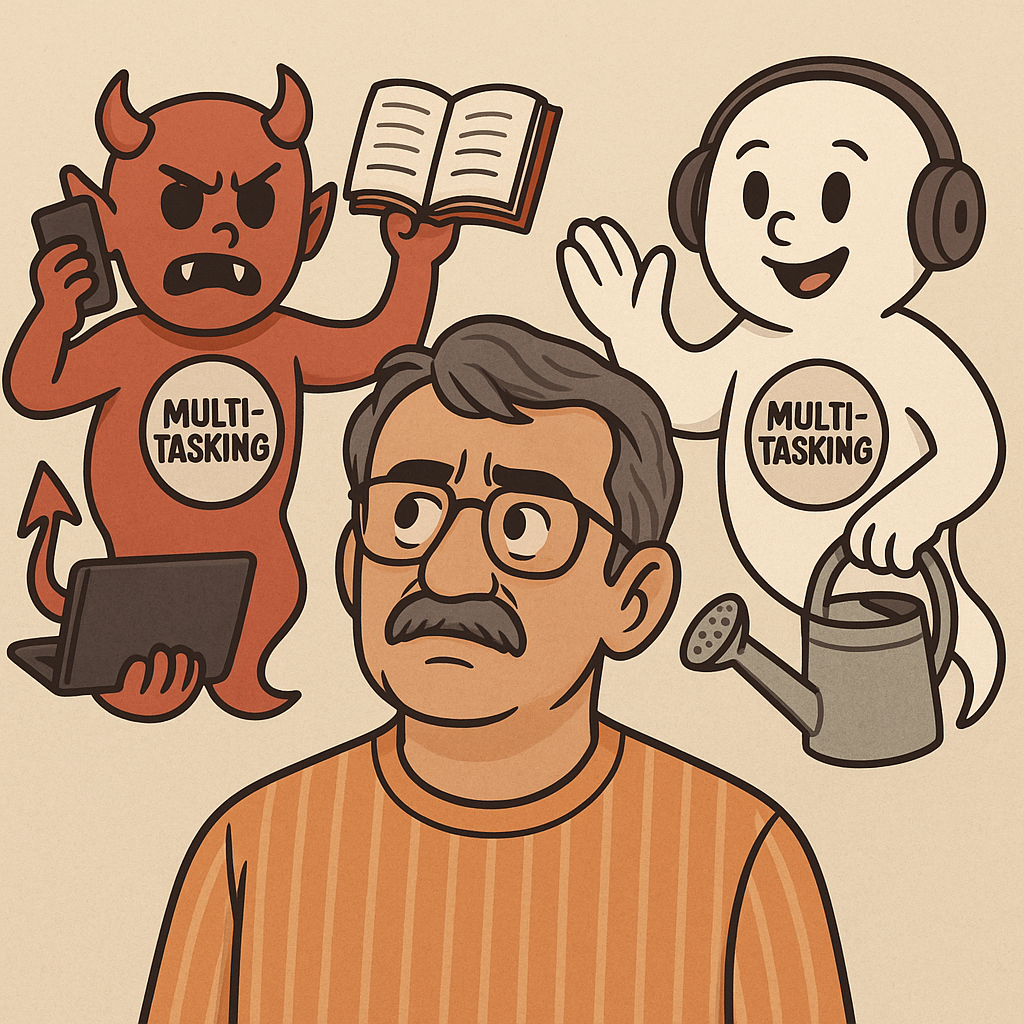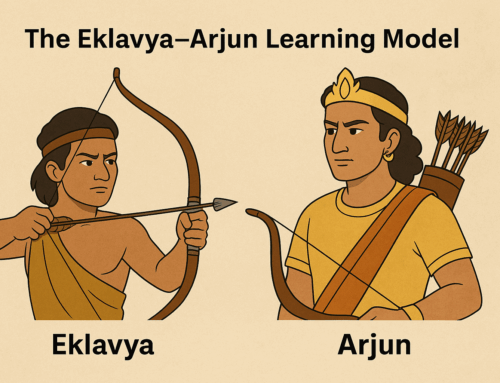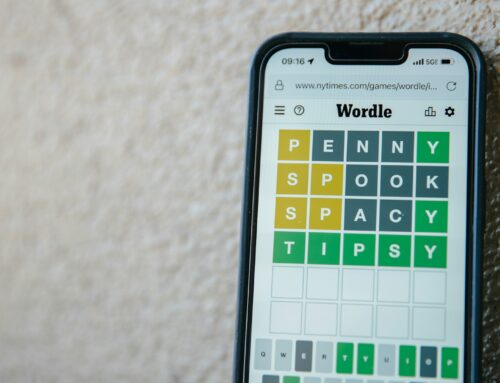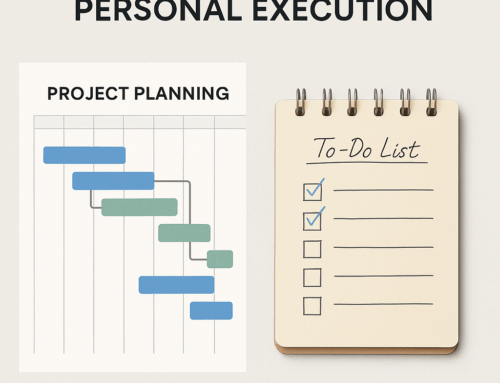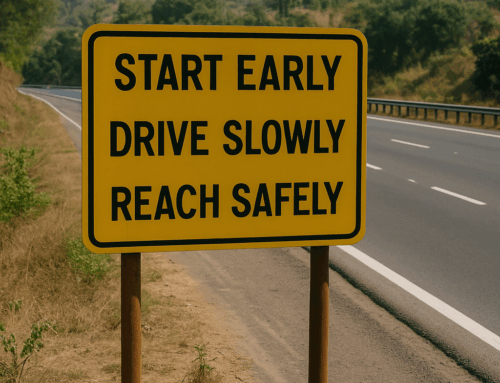Multitasking. The word itself often sparks frowns. Distraction, half-done work, and errors have given it a bad reputation. But here’s the twist: what people usually condemn isn’t multitasking at all—it’s what many call multi-focusing.
Trying to write an email while also solving a complex problem, or talking to someone on the phone or staying on a chat during a meeting, splits your attention and guarantees shallow work. Our brains can’t give deep focus to two demanding tasks at once.
The real story of multitasking is different—and far more useful.
Pairing a mental activity with a physical one often works beautifully.
- Listen to an audiobook while walking.
- Reflect on ideas during a workout.
- Stretch while on a routine call.
Even two light physical activities can complement each other—like cooking while listening to music or walking while sipping coffee.
In Get Up, Dr. James Levine introduces NEAT (Non-Exercise Activity Thermogenesis)—the everyday movements that keep us healthy. One of his key suggestions: after every meal, do a NEAT activity for 15 minutes. Why NEAT? Because it’s these small, consistent movements that prevent long sitting, keep metabolism active, and support overall well-being.
I tried it. After breakfast, I head to my balcony garden. I check on each plant, remove weeds, trim old leaves, water where needed, and sometimes spray neem oil to fight pests. What could have seemed like gardening chores — and risked becoming another task people tend to dislike and skip — turned into a perfect NEAT activity.
After lunch or dinner (I work from home), I switch to small organizing tasks around the house. At first glance, these look like little chores or “time fillers.” But when reframed as NEAT, they become energizing and purposeful.
Of course, on some busier days, I might not have the luxury of time and have to be at my desk; I don’t drop my NEAT commitment, and I use my under-desk elliptical while working.
One more example from my daily routine: I often keep the radio on while I work. The music soothes me and refreshes my mind subtly while I code, handle small reading, or do light writing. That’s good multitasking—mental work paired with a light sensory background.
But when I have to read or write something complex, I switch the radio off. That’s the moment it crosses into multi-focusing, where my brain would struggle to split attention.
This simple switch—knowing when multitasking helps and when it hurts—makes all the difference. This is multitasking done right.
A Practical Takeaway
Try a 7-day NEAT + multitasking experiment:
- After each meal, spend 10–15 minutes on a light physical task.
- Choose activities that matter to you—watering plants, tidying up.
- Or if you go to the office for work, arrange a task that can be done while walking, such as a discussion with a colleague or boss. Or simply do whatever, but do not use the chair for those 15 minutes
- Notice the lift in energy, focus, and satisfaction.
- Bad multitasking = multi-focusing (splitting mental bandwidth).
- Good multitasking = complementary activities (mind + body, or body + body).
Once you see the difference, multitasking transforms from a productivity villain into a secret weapon.
Subscribe to my newsletter, to get tips like this and more, directly in your inbox!


